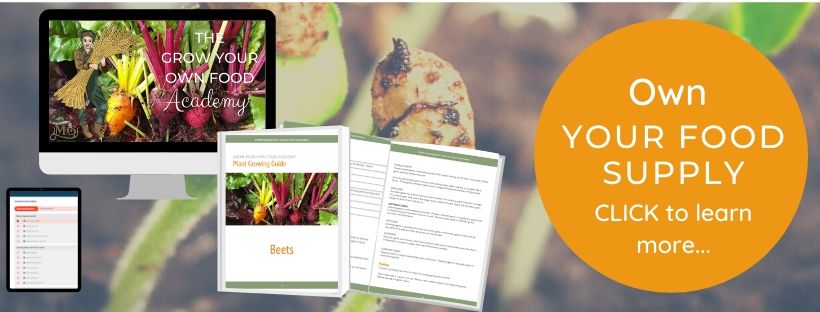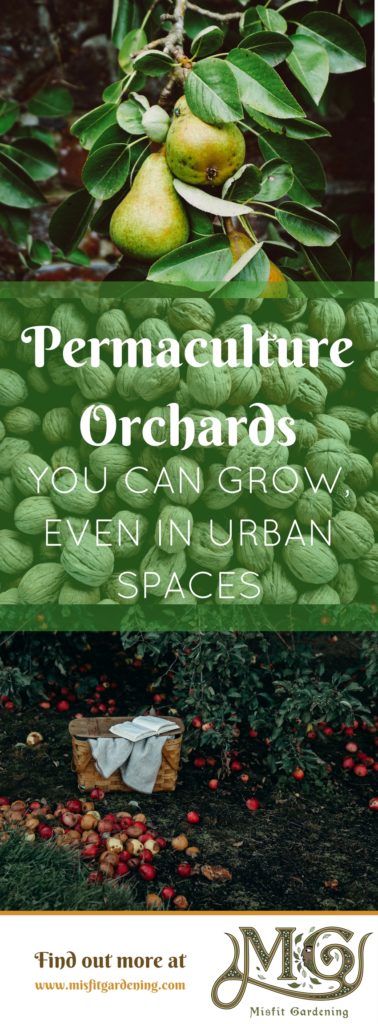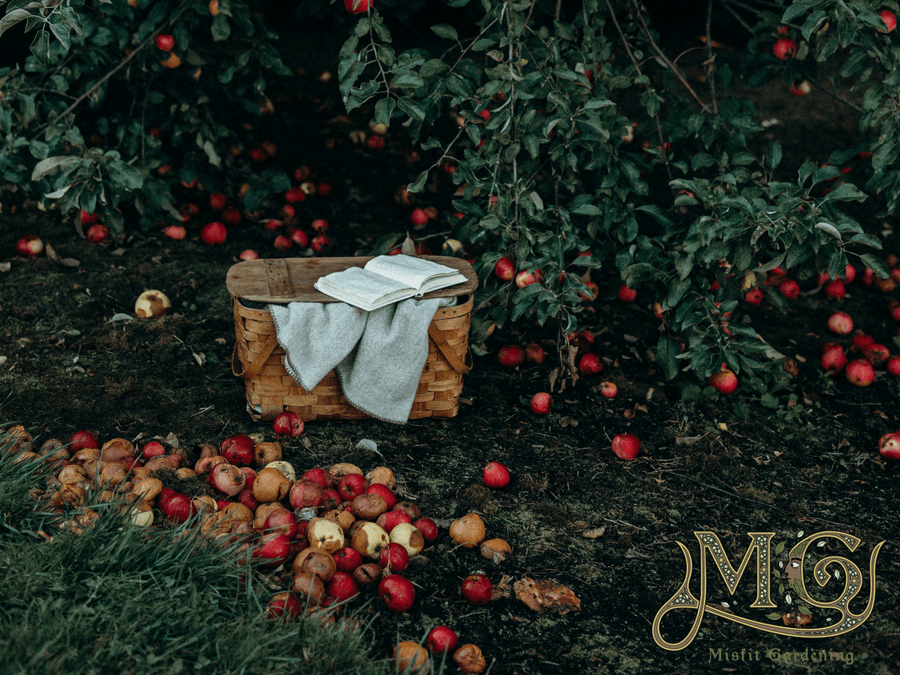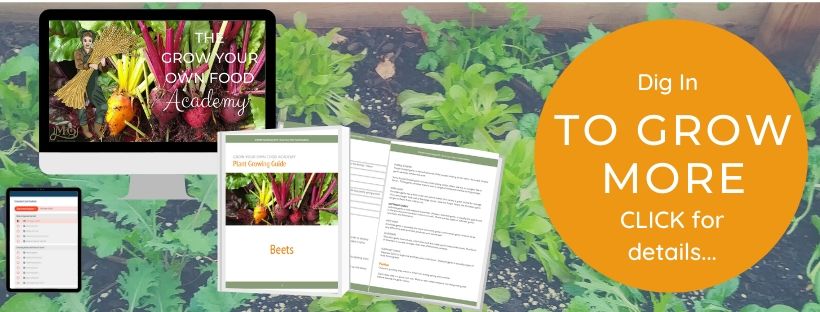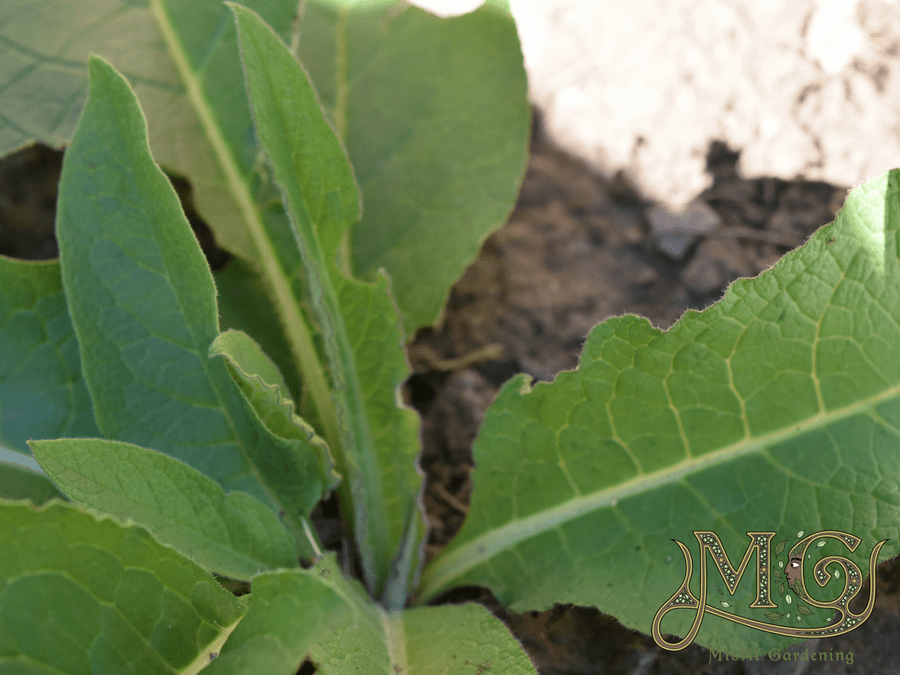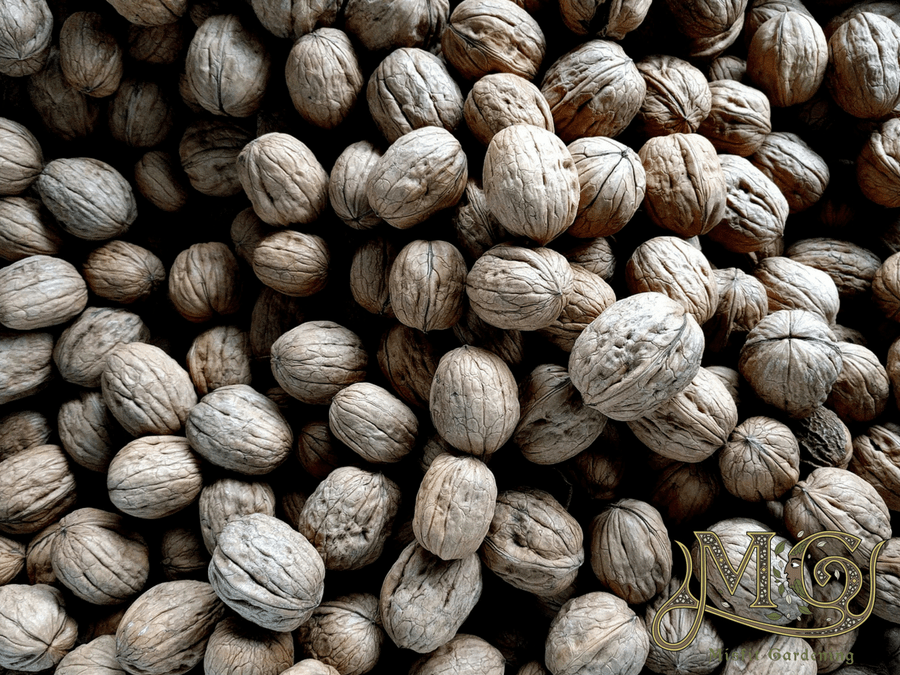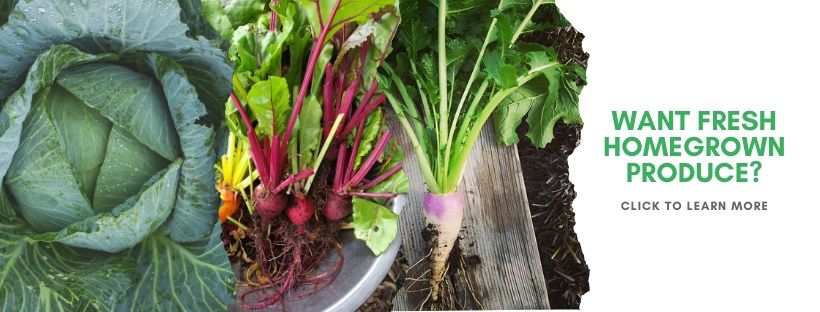A permaculture orchard in your backyard is a great way to be able to grow more food and for those of you who are into prepping, a food forest is a stealthy way to grow food. Read on to find out how to grow a backyard permaculture orchard.
This post contains affiliate links: I am grateful to be of service and bring you content free of charge. In order to do this, please note that when you click links and purchase items; in most (but not all) cases I will receive a referral commission. Your support in purchasing through these links enables me to keep blogging to help you start homesteading and it doesn’t cost you a penny extra!
See Disclosure, Terms and Conditions for more information. Thank you for supporting Misfit Gardening.
Characteristics of a Permaculture Orchard
I’ve been taking a Permaculture Design Course for many weeks now and one of the many topics which have really inspired me has been the Zone 2 Orchard and Food Forest unit. Permaculture seems to be synonymous with food forests and with some creative designing, an orchard food forest in your backyard isn’t impossible!
A typical orchard in permaculture Zone 2 is always intensively cultivated and heavily mulched. The plants are well maintained with pruning, grafting, chop, and drop of ground cover or biomass producing plants. These orchards are stacked in function and height and are densely planted.
There are 7 layers in a permaculture food forest:
- Tall Tree Layer – full-sized fruit or nut trees or fast-growing nitrogen-fixing trees. Typical trees in this layer are chestnuts, walnuts, nut-bearing pines, standard rootstock apples, pears, and plums. Nitrogen-fixing include carob, alder, mesquite, black locust, and tagasaste. Linden or the English lime trees, silver birch, and robe locust may also feature in this layer.
- Low Tree Layer – semi-dwarfing fruit and shade-tolerant fruiting trees make up the second layer. These are often typical backyard orchard trees like pears, apples, medlar, persimmon, and mulberry but they may also be species which are not a traditional orchard tree, like coffee or pawpaw. Trees in this food forest layer include apricot, peach, almond, nectarine, rowan (mountain ash), hawthorn (mayflower), plums and cherries. In this layer may also be other trees that provide nitrogen-fixing and attracting pollinators but are not edible. Laburnum (golden chain tree) is poisonous but provides lots of mulch and attracts pollinating bees to the area.
- Shrub Layer – this layer is exciting and diverse. It contains wildlife attracting plants, flowering shrubs and edibles. Plantings can reflect many uses such as food, brewing, wildlife habitat, crafts such as basket weaving and so much more. Plants found in this layer of a permaculture food forest include roses, serviceberry (amelanchier), hazel and filberts, willow, bamboo, buddleia (butterfly bush), lilac, raspberry, currants, aronia (chokeberry), cornelian cherry dogwood, elder (sambucus), sage, rosemary and many more.
- Herb Layer – this is non-woody vegetation, edible and medicinal herbs. It also includes plants that accumulate nutrients, produces biomass for mulch and soil building plants. You might find plants like sweet cicely, parsley, tarragon, fennel, dill, thyme, peppers, tomatoes, okra, sorrel, collards, Good King Henry, chard, bush beans, echinacea, mint, chives, lemongrass and many, many more.
- Ground Cover Layer – creeping plant species such as strawberries, clover, nasturtium, creeping chamomile and thyme.
- Vine Layer – this layer includes perennial vines like passionflower, kiwi, hops, grapes but also flowering vines like honeysuckle, trumpet flower, climbing, and rambling roses, clematis and other climbing flowers which attract beneficial insects. This layer also includes annuals like pole beans, squashes, cucumbers and melons.
- Root Layer – rooting crops such as daikon radish, turnips, potatoes, sunchokes, oca, turmeric, ginger, carrots, parsnips, garlic, onions, sweet potato, licorice, scorzonera, salsify, and other root vegetables and herbs.
Permaculture orchards are areas of intensive production. They combine food-producing plants with non-food plantings and often form areas where animals such as chickens, fowl (ducks, geese and the like), rabbits, bees, quail and even pigs may be raised. Although pigs might not be something you can have in an urban setting.
As always check your local city ordinances, HOA, bylaws, and mortgage (in England it may state you cannot own poultry!) for restrictions if you intend to raise animals in the orchard area.
Related post 8 Practical Livestock Options for Urban Homesteads.
In many permaculture designs in Australia, the fenced chicken runs build in fruiting trees into the design as the chickens will eat the pests/bugs and fallen fruit whilst their manure provides a nutrient source for the tree.
When designing the orchard, you should allow for succession by planting nitrogen fixing and pioneer mulching plants to build the soil. These early plantings would be plants like lucerne, clover, honey locust, elaeagnus multifora or goumi, soy beans, cow pea, black locust, field beans, autumn olive or green manure cover crops, comfrey, buckwheat, barberry, laburnum, alfalfa, licorice and stinging nettle. These all produce biomass for chop and drop mulching, fix nitrogen, stabilize soil or pull up deep seated nutrients in the ground.
The fruiting plants would then be planted once the nitrogen fixing trees became established enough to provide protection. These nitrogen fixing trees would be harvested for wood or mulch once the fruiting system was established. Grafting and planting of fruit is encouraged annually to build the orchard progressively.
Tradition Isn’t Always Monoculture
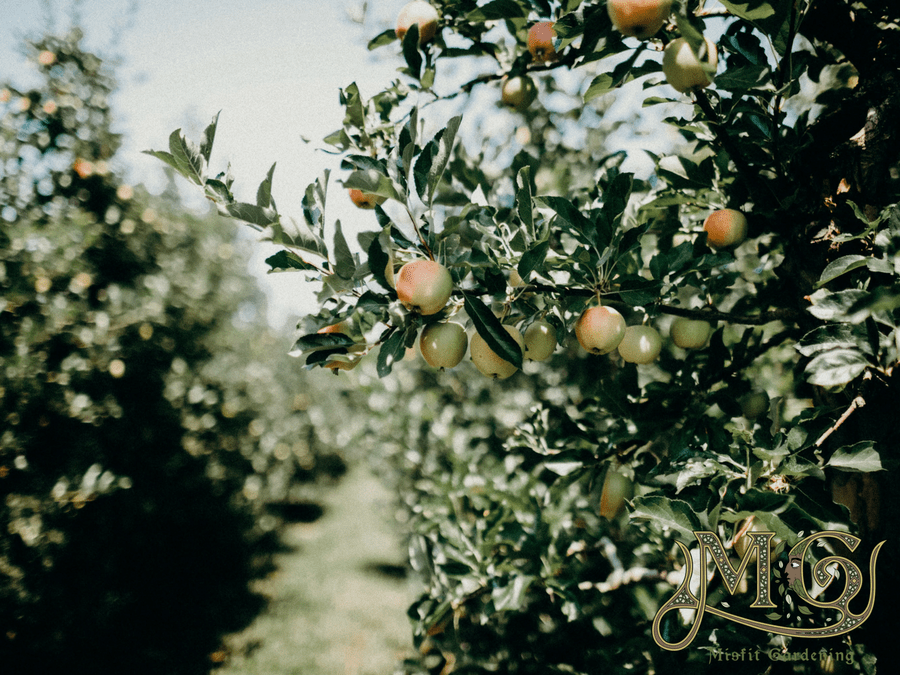
Traditional self-sufficient farming practices in England often placed goats on land to clear it, then chickens, ducks, and geese to manure and manage soil-borne over-wintering pests before planting up the orchard with a mix of fruit trees. Orchards are generally a project you want to start as early as possible because it can take a few years for it to become established and to yield fruit.
Bees were traditionally kept in the orchard to improve pollination of the spring blossoms on the trees thereby enhancing yields. Once the orchard was established, pigs would be turned out into the orchard in fall to eat the windfall fruit and to lower the cost of the feed bill.
Orchards in Europe traditionally had many varieties of fruit in them; walnuts and chestnuts formed the high canopy with apples, pears, medlars, crabapples and quince as the fall-ready fruit. Summer fruits were mainly mulberry, cherries, damsons, gages, and plums. Stone fruit could only be grown with careful planting and pruning on a southern wall then peaches, nectarines or apricots could flourish.
In many USDA zones, all of these plants can be grown with other fruit such as Asian pears, Jujube or Chinese dates, persimmons, almonds, pecans, olive, fig, and pomegranate to grow thereby increasing the tree layer diversity in the system.
These old orchards are a far cry away from the large commercial orchards seen now. These large orchards are a monoculture with all the associated pest and soil fertility problems. A diverse system is a stable system and doesn’t need fertilizers and pesticides bringing in to keep harvests coming.
Designing a Permaculture Food Forest
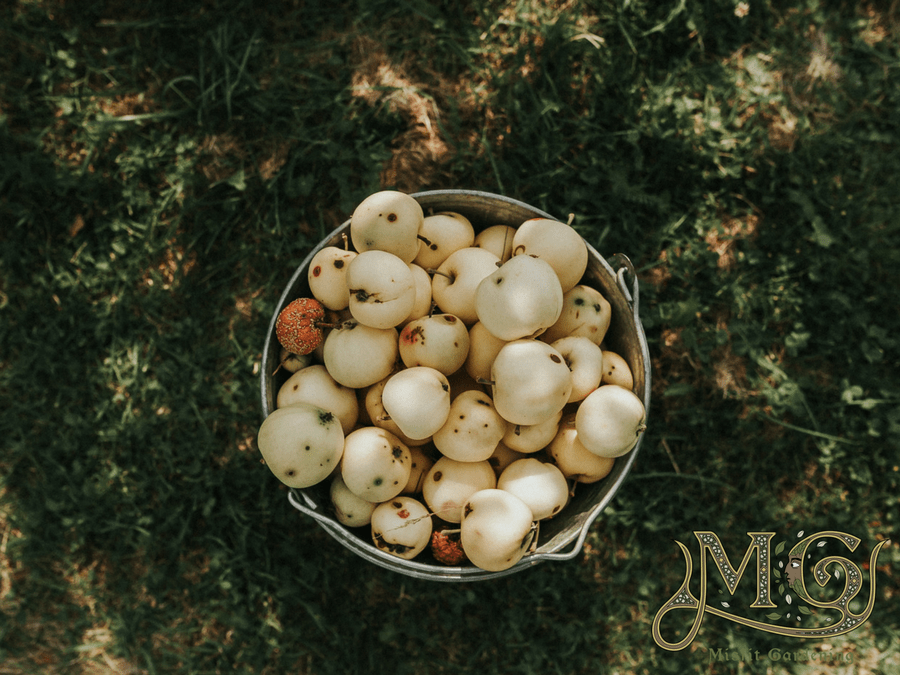
In developing an orchard site where animals cannot be used due to city ordinances, the soil can be built with nitrogen-fixing plants such as clover, lucerne acacia, and black locust. Sheet mulching makes it easy to smother weeds if they are tenacious in the orchard area. If your land is sloped, remember to plant along the contours or on contour banks.
A great orchard design will contain crop plants (fruit and nut trees), windbreak species that do not compete for resources from the crop species and scattered pest control and pollinator trees. The understorey must be designed based on the needs of the orchard; an animal forage understorey is different from vegetable or annual cropping understorey.
Think about what you want your understory to be; more food plants or forage for your chickens?
The following tips may be useful in design and plant choice:
- Plants for the understorey must be trialed to find successful plantings for the system. A good starting point is to include gooseberry, currants, artichokes (globe and sun), lucerne, clover, comfrey and umbellifers (Queen Anne’s Lace, dill and fennel).
- Berberis varieties often play host to diseases such as rust which can pass to other species in the system. They can be used to suppress pest plants in a system then removed.
- Spiney plants such as boxthorn, pyracantha or acacia armata can provide protection to your new trees from chicken damage or protect chicks from predatory birds.
- Deciduous trees can be replaced with evergreen feijoa, citrus, olive or loquat.
- Long-term plantings of chestnut, walnut, pecan, almond and plum should be made as soon as possible. Many of these plants can take more than 10 years before they will bear fruit.
- Flowers for attracting birds, bees and butterflies such as kniphofia, fuschia, daylily, dahlia, delphinium, borage, lavender, salvia and poached egg plant or wildflower mixes will provide food and habitat for many species in the food chain and beneficial insects and animals to manage pests.
- Plant for a seasonal blooms for insect and bird forage.
- Plant for cross pollination for example, apple and pear pollination groups and include species which support pollination such as quince and crabapple.
In designing the orchard, it is important to consider the structure (height and spread) of the mature trees and the shade it will cast. The lower stories must be able to thrive under the canopy. Shade tolerant trees include coffee, papaya, hawthorn, citrus, and black mulberry and do not require full sun to produce fruit. Walnuts are notorious for allelopathy (they excrete compounds in the soil to stop other plants from growing nearby) but are not the only plants to do so, ensure that the species you are selecting can tolerate allelopathic compounds.
Plant different types of fruit and nuts in your orchard to avoid monoculture and to alleviate dependence on once species.
Diversity
Remember that planting lots of types of fruit and other plants in your orchard will help to diversify the system as a whole. Diverse systems have the following benefits:
- A diverse array of plants will help to create a resilient microclimate and ecosystem.
- Diverse plantings help to confuse pests.
- Diversity reduces vulnerability and reliance on only one plant or species.
- Diverse plantings lead to stable ecosystems and guilds.
To maintain the health of the orchard the following needs must be met:
- Water
- Energy
- Pollination
- Harvesting
- Access
- Soil nutrients
- Wind protection
- Pruning
- Pest management
Water in the soil may be increased by contour swales and including ponds for water sources for wildlife. Remember, that water sources in the orchard will build microclimate by keeping the area warmer, wetter and reflect more light.
Good drainage is important for fruit and swales can move water to a drainage point. Areas susceptible to flash flooding may still be used for an orchard by planting some of the following plants:
| High Resistance to Waterlogging | Quince |
| Pecan | |
| Mulberry | |
| Citrus | |
| Almond | |
| Apricot | |
| Low Resistance to Waterlogging | Fig |
Using mulch in the orchard and growing plants that can be used as a mulch will help retain moisture and build fertility. Plants that accumulate nutrients in the soil are often great as mulch. Comfrey is a common plant used in permaculture plantings because it pulls up deep-seated nutrients which are then released to other plants when the leaves are used as mulch.
Planting herbs and/or flowers help to bring in pollinators which will improve the pollination of your orchard trees as well. Some easy to find and plant-pollinator plants include dill, bronze fennel, comfrey, and chives.
Stacking Functions
A great learning from permaculture is to plant species that provide multiple functions in the garden. Comfrey (in the picture above), yarrow, and white clover will accumulate nutrients and they flower to attract pollinators. These plants can also be cut back to provide mulch thereby suppressing weeds and retaining water.
Other multiple functions include pollinating and deterring wildlife, garlic chives are a good option for this as are daffodils.
Special Points for Urban Homesteads and Backyard Orchards
Some important points to consider for a suburban or urban setting, it is highly beneficial to consider multi-grafted varieties of fruit trees that can provide cropping and harvest throughout a season. Multi-grafted trees provide more diversity and variety of species into the design.
M27 and P9 are extreme dwarfing apple rootstocks with an ultimate height of 48”; M9, M26, and citrus PS are dwarfing at 6 to 8 feet. Semi dwarfing rootstocks are M6, M106, VVA1, Quince C, Mont Clare ad Gisella 6 at 6 to 10 ft. Careful pruning and shaping of the fruit trees can tame more vigorous rootstocks to be urban-friendly.
Traditional English Victorian garden fruit designs may find a place into the permaculture design by providing more food into the space. Consider the cordons, step-over, espalier (typically uses Quince A, M26, MM111 and MM106 for apples and pears) and living fencing designs as a productive way to add interest and structure to the design. Many espalier designs can be used for other non-edible, ornamental wildlife beneficial plants such as pyracantha or cotoneaster.
Additional Resources
For more information, you may find the following useful:
Introduction To Permaculture by Bill Mollison
Permaculture Two: Practical Design for Town and Country in Permanent Agriculture by Bill Mollison
Gaia’s Garden: A Guide to Home-Scale Permaculture by Toby Hemenway
If you liked this post please take a moment to share it using the share buttons below or pin the image below to Pinterest and save it for later.
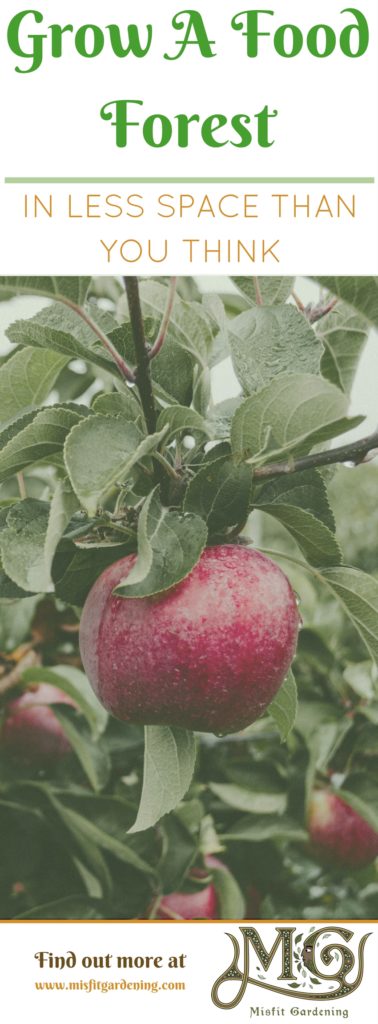
Always ensure to operate safely. All projects are purely “at your own risk” and are for information purposes only. As with any project, unfamiliarity with the tools, animals, plants, and processes can be dangerous. Posts, podcasts, and videos should be read and interpreted as theoretical advice only and are not a substitute for advice from a fully licensed professional.
As remuneration for running this blog, this post contains affiliate links. Misfit Gardening is a participant in Affiliate or Associate’s programs. An affiliate advertising program is designed to provide a means for this website/blog to earn advertising fees by advertising and linking to websites offering products described in the blog post. It does not cost you the Reader anything extra. See Disclosures, Terms & Conditions and Privacy Policy for more information about use of this website.
